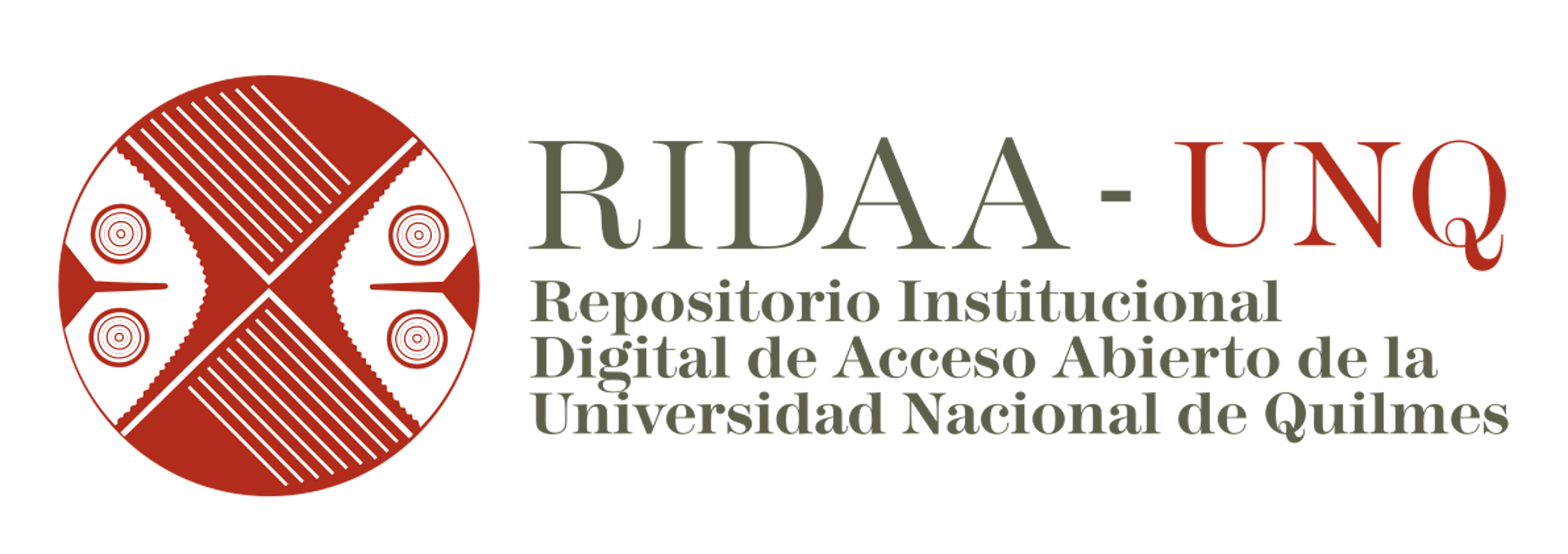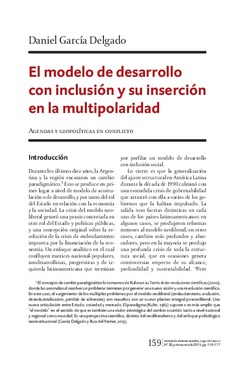El modelo de desarrollo con inclusión y su inserción en la multipolaridad : agendas y geopolíticas en conflicto
The development model with inclusion and its insertion in multipolarity : agendas and geopolitics in conflict
Abstract
El trabajo intenta justificar la emergencia de un nuevo paradigma en la última década. Este se fundamenta en el cuestionamiento, a nivel nacional, paradigma neoliberal y el economicismo del establishment junto al surgimiento de un nuevo modelo de desarrollo inclusivo con mayor presencia del Estado y autonomía política. En segundo lugar, y simultáneamente, el cambio del proceso de integración regional, la modificación de una perspectiva más comercial hacia otra más autonómica, el “No al ALCA” y la creación de la Unasur y la CELAC muestran que la región pasa de ser pensada a pensarse por sí misma. Y finalmente, a nivel global, con la modificación sustantiva del poder económico y político mundial, se constituyen China y los BRICS en el centro de acumulación capitalista más dinámico del planeta y junto con ello la región latinoamericana se inserta en la cooperación Sur-Sur: el pasaje de la globalización unipolar a la multipolar.
Este nuevo modelo y paradigma posneoliberal está siendo cuestionado por poderes tradicionales en los últimos años, tanto internos como externos, marcando un tiempo de inflexión, pero al mismo tiempo el modelo manifiesta su capacidad y voluntad de consolidarse. Se muestran aquí las agendas y geopolíticas que corresponden a cada uno de estos niveles, explorando sus diversas posibilidades de éxito. The work attempts to justify the emergence of a new paradigm in the last decade. The same is based on questioning, nationally, the neoliberal paradigm and economism of the establishment by the emergence of a new model of inclusive development with greater presence of the State and political autonomy. Second, and simultaneously changing the regional integration process, modifying a commercial perspective to a more autonomous, the “Not to ALCA” and the creation of Unasur and CELAC show that the region happens to be thought to think for herself. And finally, globally, with substantive changes in global economic and political power, China and the BRICS constitute the most dynamic center of the planet and with it capitalist accumulation Latin America is inserted through the South cooperation South: the passage from unipolar to multipolar globalization. This new model and post-neoliberal paradigm are being challenged by traditional powers in recent years, both internal and external marking a time of inflection, but while the model expresses its ability and willingness to consolidate. In what follows we will show
geopolitical agendas and corresponding to each of these three levels, exploring the various possibilities of success.

